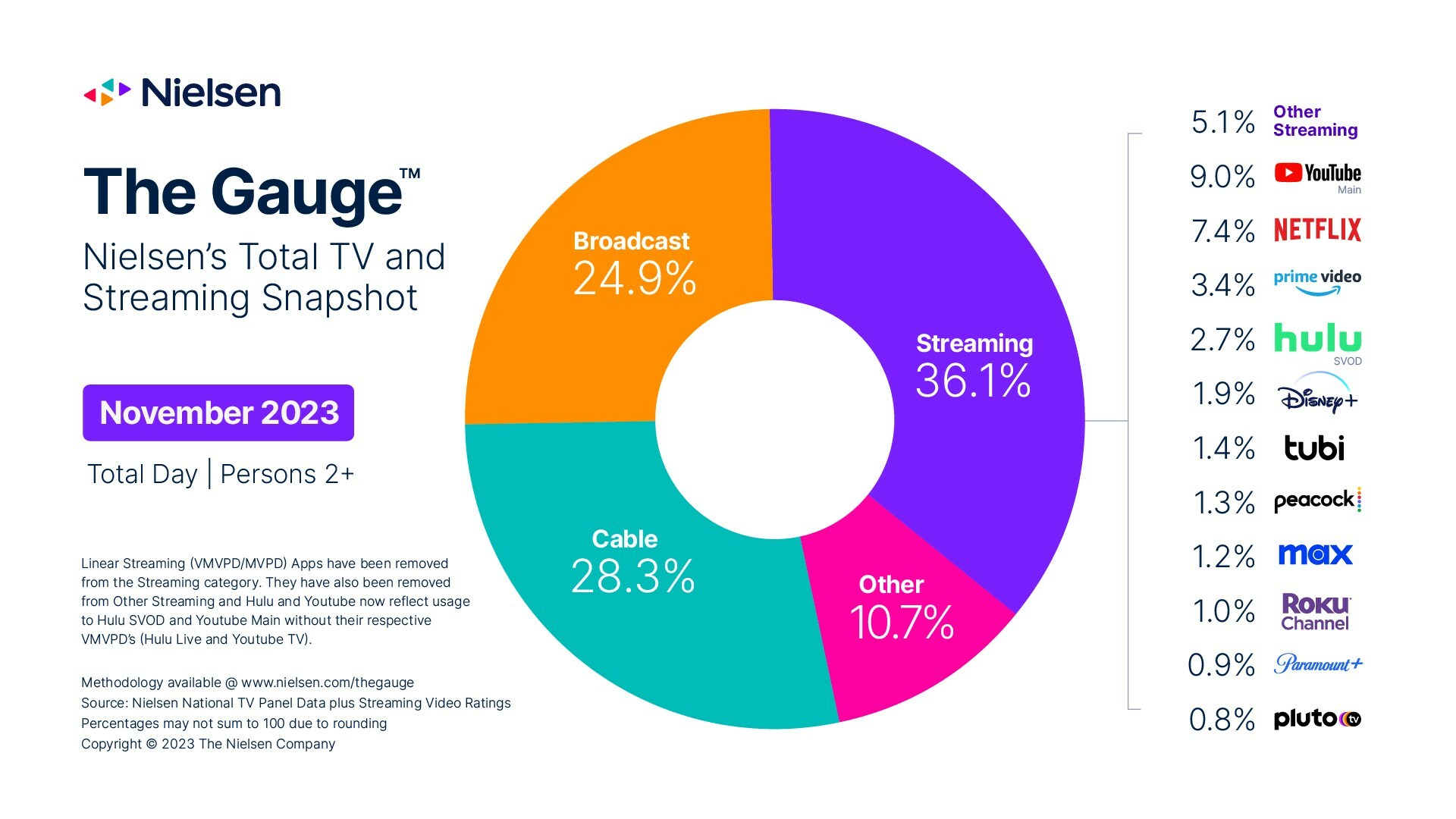Nielsen: Thanksgiving Holiday Boosts Broadcast Viewing TV Share
Broadcast’s share of the TV audience grew for the fourth consecutive month in November while cable and streaming lost share according to Nielsen’s The Gauge

NEW YORK—Broadcasters share of total TV viewing grew again in November as total TV viewing surged to the highest levels recorded since January 2023, according to Nielsen's latest report of The Gauge. the media measurement company's monthly snapshot of total broadcast, cable and streaming consumption that occurs via television.
Overall TV usage in November was up 5.7% compared with October, primarily driven by the week of Thanksgiving (11/20/23 - 11/26/23), when viewing levels peaked and measured over 14% higher than the previous month, Nielsen said.
November marked a fourth consecutive month of growth for broadcast, as the category added 0.3 points to tie its highest share of 2023 (January) with 24.9% of overall TV usage. Month-over-month, broadcast usage was up 7% in November, largely propelled by the week of Thanksgiving when usage jumped 18.4%.
Sports was another important driver of the growth in broadcast viewing. Broadcast sports viewership was 21% higher in November versus October as sports accounted for one-third (33%) of all broadcast consumption. While overall broadcast usage decreased 5.3% (-0.8 pts.) on a yearly basis, viewership to broadcast sports was up 2.8% compared with 2022.

Meanwhile cable viewing increased by 1.3% in November and the category gave up 1.2 share points to finish the month at a category-low 28.3% of TV viewing.
The feature film genre demonstrated typical seasonal lifts (+26%) and accounted for the largest portion of cable consumption at 19%. Cable news viewing slipped slightly (-0.6% vs. October) and finished at 18.4% of all cable usage, while monthly sports viewership dropped 16%.
Cable usage in November was 13% lower than 2022 levels, and the category has lost 3.5 share points on a year-over-year basis.
Get the TV Tech Newsletter
The professional video industry's #1 source for news, trends and product and tech information. Sign up below.
Streaming saw a 4.3% increase in streaming usage in November, but its overall share of TV consumption fell by 0.5 share points, bringing it to 36.1% of TV. Similar to broadcast, streaming usage peaked during the holiday week when viewing jumped over 10% compared with October levels.
Streaming platform and content highlights include:
- Peacock represented the largest usage increase, with a 23% increase in viewing (+0.2 pts.) that was driven largely by football coverage and the Macy's Thanksgiving Day Parade, leading it to a platform-high 1.3% of TV.
- Netflix exhibited an 8.6% increase in usage and added 0.2 share points, finishing the month at 7.4% of TV usage. The Netflix limited series, All the Light We Cannot See, was the only original title ranked among the top 10 streaming programs in November, with 2.1 billion viewing minutes.
- TubiTV viewership was up 8.3% in November to notch a platform-best 1.4% of TV usage.
- Bluey on Disney+ claimed the top streaming title with 3.8 billion viewing minutes, followed by Grey's Anatomy (3.7B) on Netflix, Suits (3.3B) on Netflix and Peacock, and Friends (3.0B) on Max.
- Linear (live TV) streaming via MVPD (multichannel video programming distributors) and vMVPD (virtual multichannel video programming distributors) apps represented 6.4% of total television usage in October. Linear streaming is included in the appropriate broadcast or cable category, and is not included in the streaming category.
George Winslow is the senior content producer for TV Tech. He has written about the television, media and technology industries for nearly 30 years for such publications as Broadcasting & Cable, Multichannel News and TV Tech. Over the years, he has edited a number of magazines, including Multichannel News International and World Screen, and moderated panels at such major industry events as NAB and MIP TV. He has published two books and dozens of encyclopedia articles on such subjects as the media, New York City history and economics.

